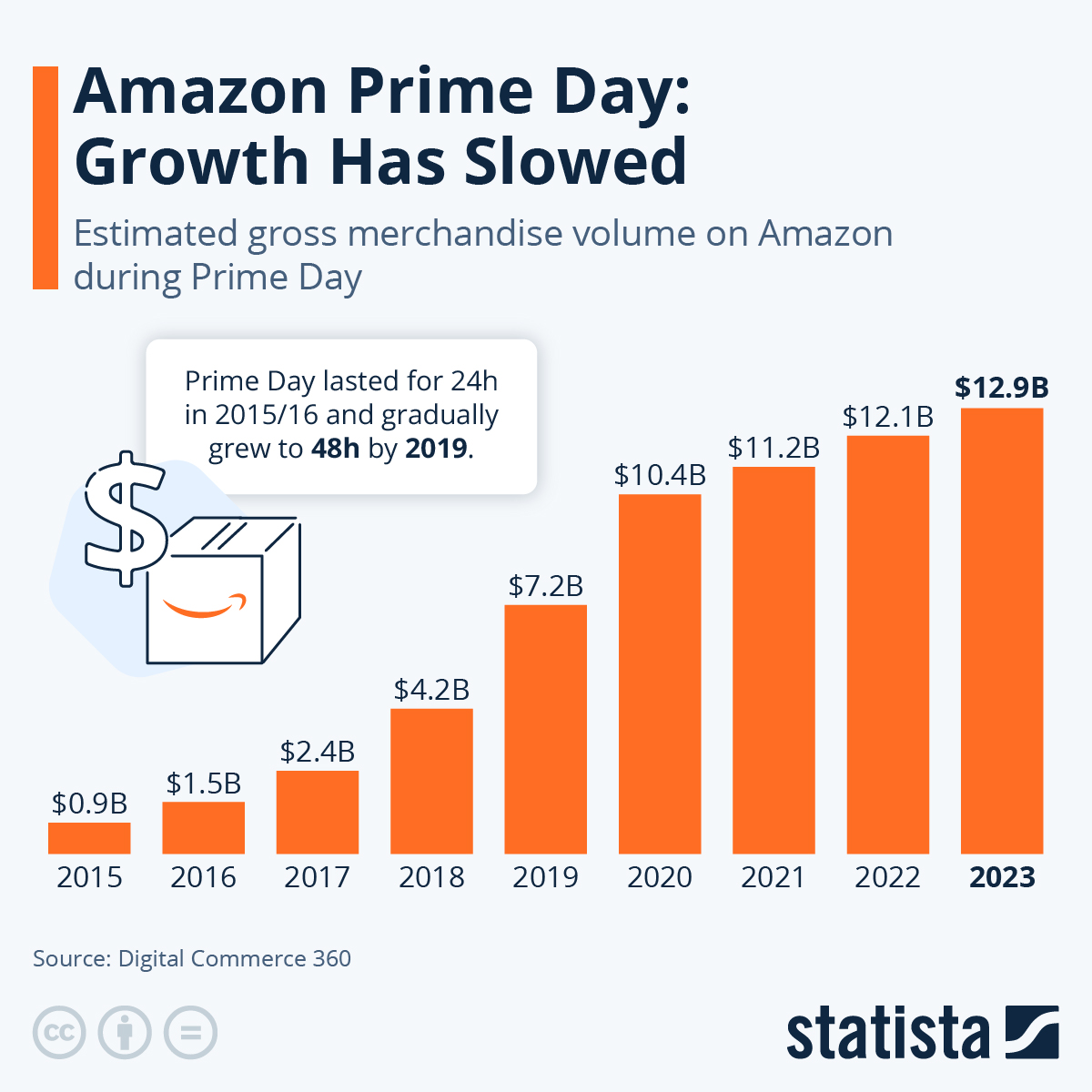Starting today, July 16, Prime members will have 48 hours to scour, according to Amazon, "amazing deals on products from top national brands and small business sellers". Originally conceived in 2015 to celebrate Amazon's 20th anniversary, Prime Day has quickly evolved into a major shopping event, rivaling Black Friday and Cyber Monday. For Amazon, it has become a great vehicle to boost sales in the slower summer months, explaining why the event has been extended from 24 hours in 2015 and 2016, to 30 hours in 2017, 36 hours in 2018 and finally 48 hours since 2019. After having been forced to move Prime Day to the fall due to the pandemic in 2020, Amazon's annual shopping holiday has been back in its original summer slot since 2021.
As the following chart, based on estimates from Digital Commerce 360, shows, Prime Day sales have grown significantly over the years. In 2020, total merchandise volume, including first and third-party sales passed the $10 billion milestone for the first time and 2021 saw $11.2 billion in sales. Since that year, however, growth has been slower, hitting $12.9 billion in 2023. Sales are projected by Adobe to rise to $14.0 billion this year, which would be a step up in terms of growth. The number of Prime members worldwide has grown from 150 million in January 2020 to more than 200 million in April 2021. Since then, growth hasn't been published by Amazon (always a telltale sign) while third-party analysts estimate the program to have been around 230 million members strong as of Q1 2024 - also marking a slowdown in growth.
Amazon Prime Day deals are only available to members, creating an incentive for consumers to sign up for the program or stay onboard. Research has shown that Prime members outspend non-members by a significant margin, explaining why Amazon is putting so much effort into its membership program.





















